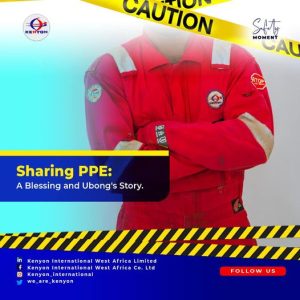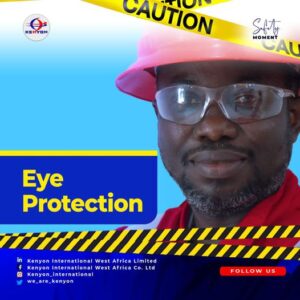Mar 13, 2023 | Blog, safety
Willie had instructed his team to conduct wellhead maintenance on the Xmas tree that was demobilised from the site back to the warehouse at the office. They had set out that morning after their toolbox talk and had gone ahead to begin the pressure-testing of the Xmas tree. Then they discovered that the coupling was not functional and the whip check they had in their caravan was faulty.
The whip check that was in good condition had been taken by another team that had gone offshore to conduct wellhead maintenance. Willie, being experienced in manoeuvring situations such as this, decided to go on with the operation as they were really pressed for time to deliver the Xmas tree to their client.
Prince, the assistant team lead, instructed the team to cautiously use the faulty whip check.
They fixed up the whip check in a way that it would serve its purpose for the time it would be used.
As they pressure-tested the Xmas tree up to 3000 PSI, the whip check could not hold the pressure anymore. The hose forcefully detached from the air compressor.
Unfortunately, it hit two technicians and Willie as well, and they sustained severe injuries that left them fighting for their lives in the hospital. Now, the report has reached the management’s table. What are the loopholes you observed in this operation and in this company?
Mar 13, 2023 | Blog
The managing Director of Kenyon International West Africa Company Limited, Dr Victor Ekpenyong, was recently invited to Business Week on TVC news anchored by Kelly Egiga.
He discussed several vital issues which included our current crude oil-producing state in Nigeria
and Africa, what the Federal Government can do to ensure we reach our full production potential of 2.53 million BPD, and finally his take on fuel subsidy.
Please follow us on YouTube, and do watch the video and share your thoughts with us.
https://www.youtube.com/watch?v=b22i9aCtwCE
Mar 13, 2023 | Blog, safety
For a while now, the new employee at X-Welding Company, Samson, had been feeling uncomfortable using the eye shade that the HSE officer provided for him. He complained that the eye shade seemed dark, but the HSE officer, Olumide, advised him to keep wearing it to protect his eyes.
One day, he decided to try out the lower eye shade labelled shade 6, and it seemed clear and comfortable for him. He then decided he would be wearing shade 6 instead of shade 11 as was recommended by the HSE officer.
After a week of constantly welding pipelines, his colleagues noticed his eyes had reddened so much.
Samson thought it was just a usual case of eye redness, and he felt it would clear off after a couple of days.
He kept on using the shade labelled 6. the next day, he woke up with swollen eyes. He went to work wearing sunshades to keep people from noticing the state of his eyes. He then sought permission from the HR manager to visit an eye clinic.
When he got to the clinic, Dr Amadi examined his eyes and asked him a couple of questions.
She asked if he was using the right protective gear for his eyes, and he responded affirmatively.
Considering he checked all the boxes in the doctor’s file, the doctor had to ask him if he had changed his eyeshade at some point. He answered affirmatively, stating he had used shade 11 for his welding jobs but felt it was too dark for him. Then he switched to shade 6 which seemed clearer and more comfortable.
Dr Amadi then instructed him to discontinue shade 6 and return to his original eye shade, as it had done a great job protecting his eyes. It was at that point that Samson understood the importance of abiding by the advice of the HSE officer.
He realised that no matter how uncomfortable protective gear is, it is built for one’s safety.
Dr Amadi prescribed some medications and advised him to go home and rest for a week so the eyes could recover.
Are there instances where you have witnessed similar scenarios in your life?
Please, do share with us.
Mar 13, 2023 | Blog, safety
Ubong could no longer endure the excruciating pain from the itch on his back. He had to report to the sickbay that morning, and after some examinations, the company nurse, Blessing, informed him that the rash on his back was a symptom of scabies, and he needed to take a few days off for his treatment and also to disinfect his personal belongings.
Three days later, Blessing had two more cases of scabies from Ubong’s colleagues, Idorenyin and Prince. These new cases prompted the nurse to begin an investigation into the origin of the spread.
From her enquiry, she discovered that Idorenyin and Prince had, at some point, worn Ubong’s PPE, and got infected from it.
If you were in Blessing’s position, what would be your recommendation to the company to help prevent the disease from spreading to other employees.
Oct 14, 2022 | Blog, safety
The eye is a very vital human organ which must be protected with caution.
At the workplace, there are situations that pose hazards to employees.
Such situations include the following:
a. working with a bright monitor or laptop
b. Not wearing safety goggles when hammering, sandblasting, and welding.
To avoid developing an eye problem in the future, it’s important for you to learn how to regulate the light intensity of your monitors and laptops to prevent your retina from being badly affected.
Also endeavour to ensure that suitable safety goggles are provided to personnel who are undertaking hammering, sandblasting or welding tasks.
Finally, it is important to know that there are substandard safety goggles on the market. To avoid purchasing such inferior goggles, check to see that the goggles have ANSI and Z-87 stamp on them. If they do not have such stamps, you will be risking your precious eyesight by using such inferior products.
At Kenyon, we prioritise safety in all our dealings.
We are performance-driven; we are Kenyon.
Sep 23, 2022 | Blog, safety
Health professionals describe cleaning your ear canal with a cotton swab, Q-tip, or any other sharp materials like a broomstick, a key and a feather as unhealthy or dangerous because it could cause an injury or infection to the ears.
When we clean the ear canal, we simply want to empty the earwax from our ears to keep it from looking unsightly, but the earwax—which is a cleansing substance—traps dirt and prevents bacteria from getting deeper into your ears to prevent any infection.
Blockages of the ears often happen when we try to clean the ear with ear swabs or pointy objects. The ear swab pushes the earwax deeper into the ears, causing an obstruction. Pointy objects, on the other hand, can cause rupturing of the eardrum.
Ideally, your ears are not meant to be cleaned, but if there is too much buildup of wax, follow these steps to clean the ear.
a. Soften: put a few drops of baby oil or glycerin into your ear to soften the earwax.
b. Irrigate: after a few days of softening the earwax, use a bulb syringe to add warm water to your ear canal
c. Drain: Then gently tilt your head to the side allowing the water to drain from your ears
d. Dry: Use a clean towel to dry the outer part of your ear.
Learn, today, to stop using pointy objects and cotton swabs to clean your ears. Prioritise the safety of all your senses.
Have you experienced any issues with cleaning your ears?
Do share with us to enlighten our readers more.


